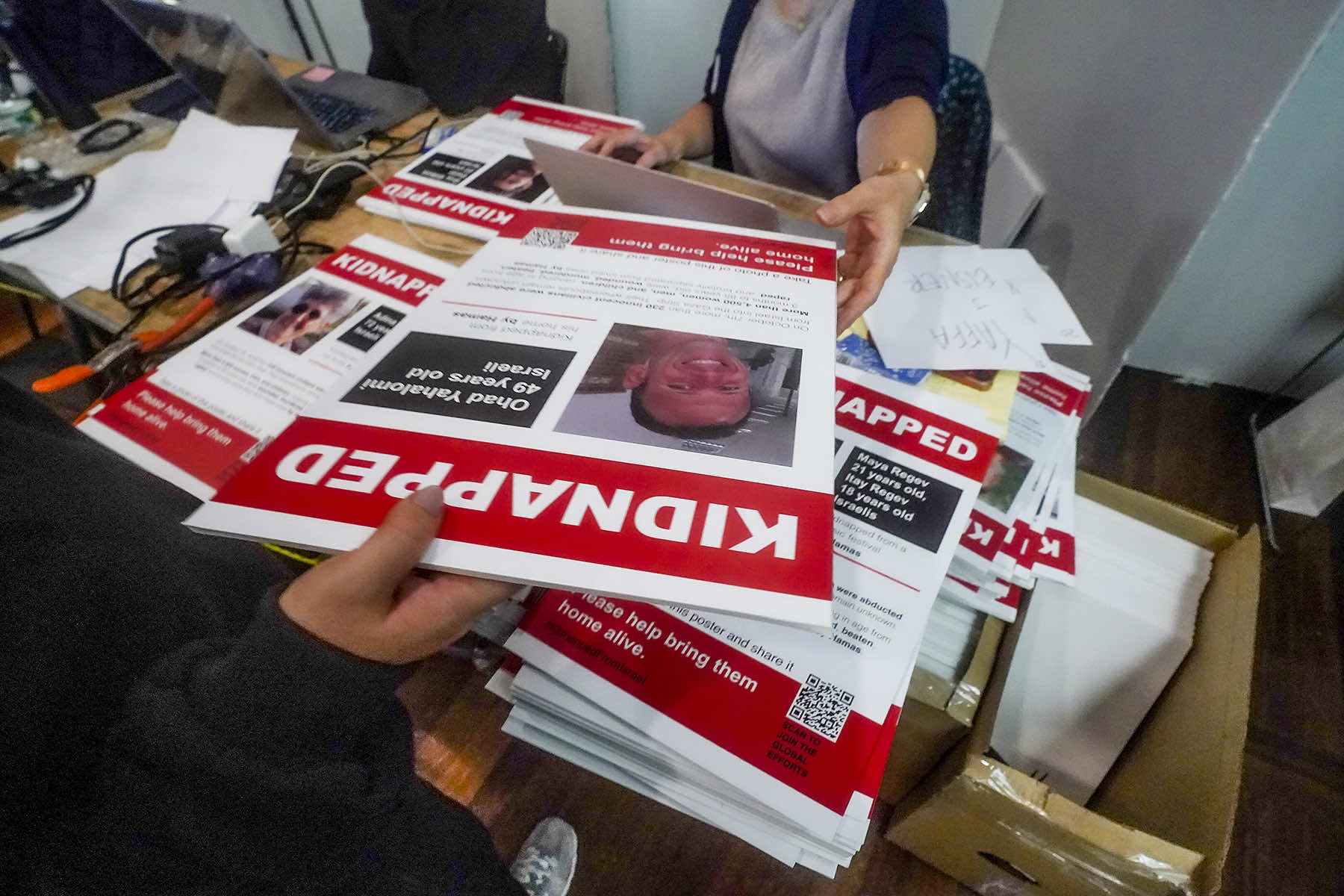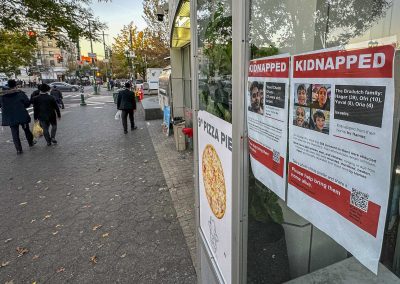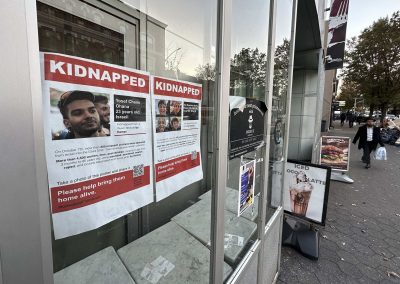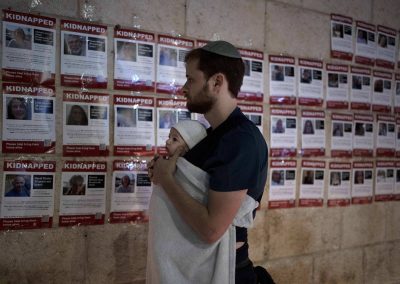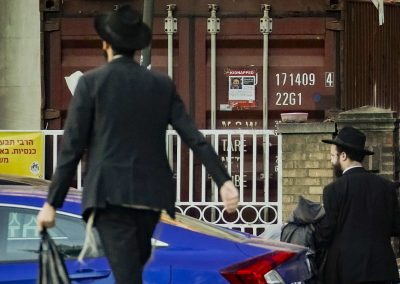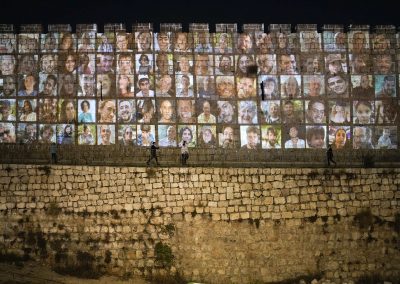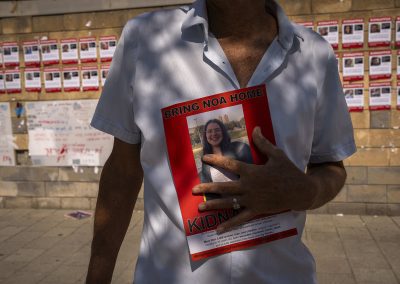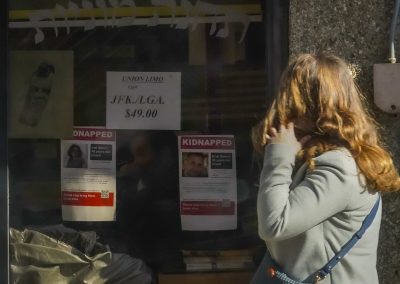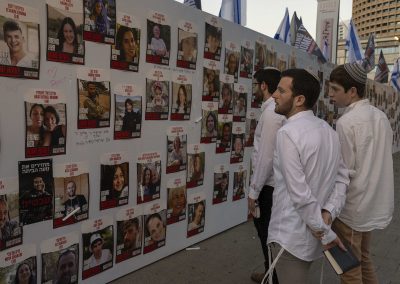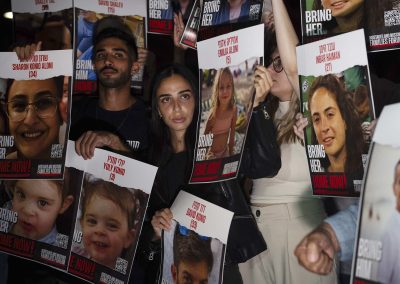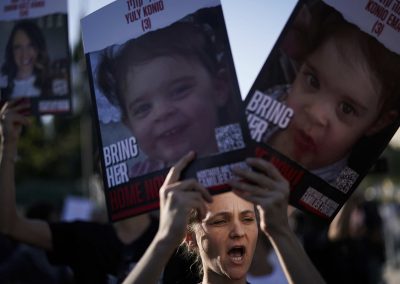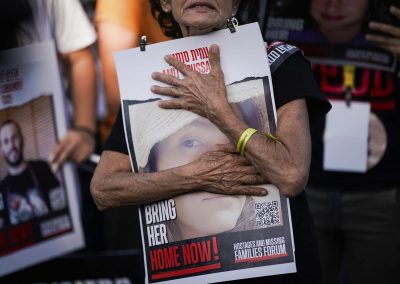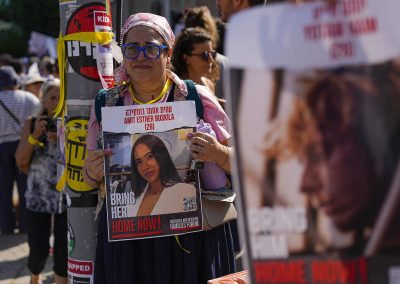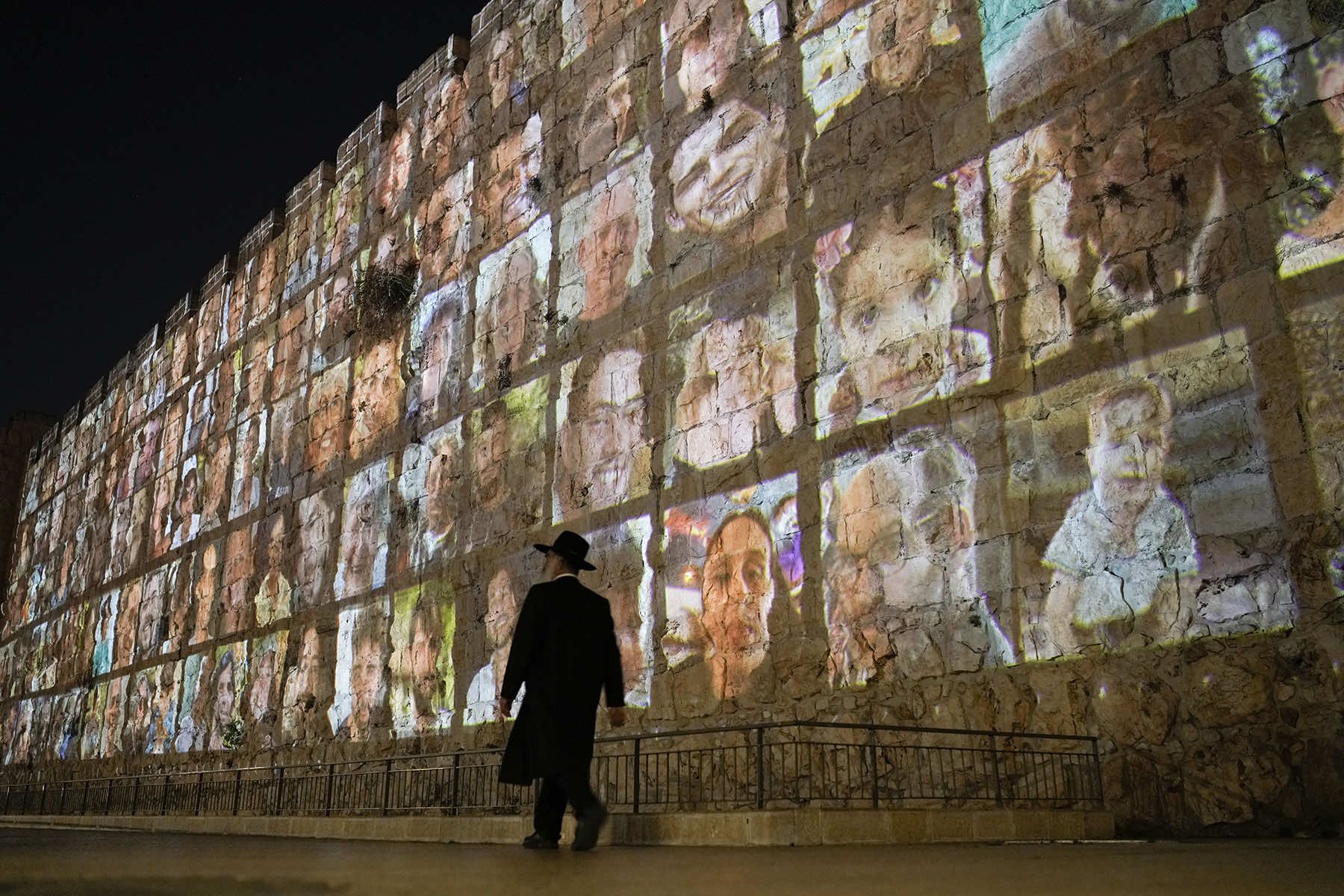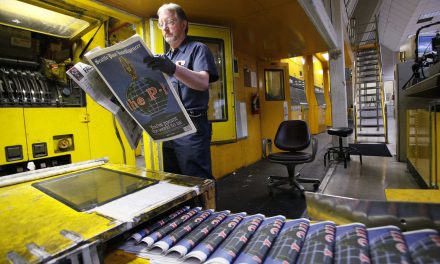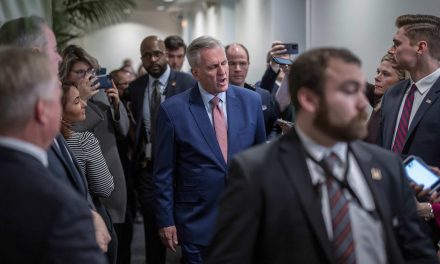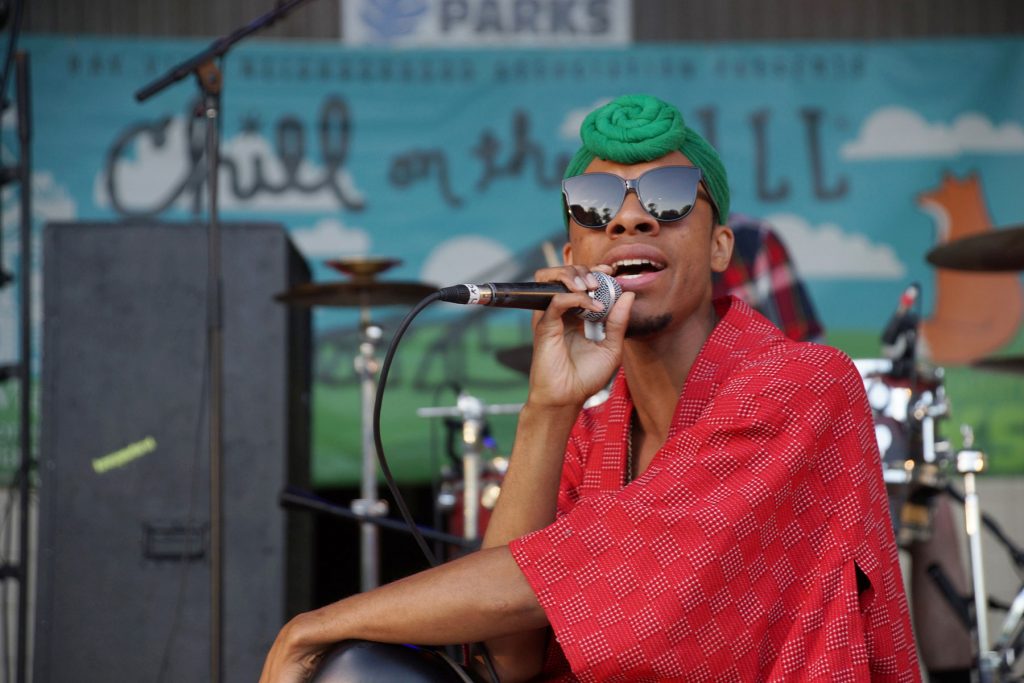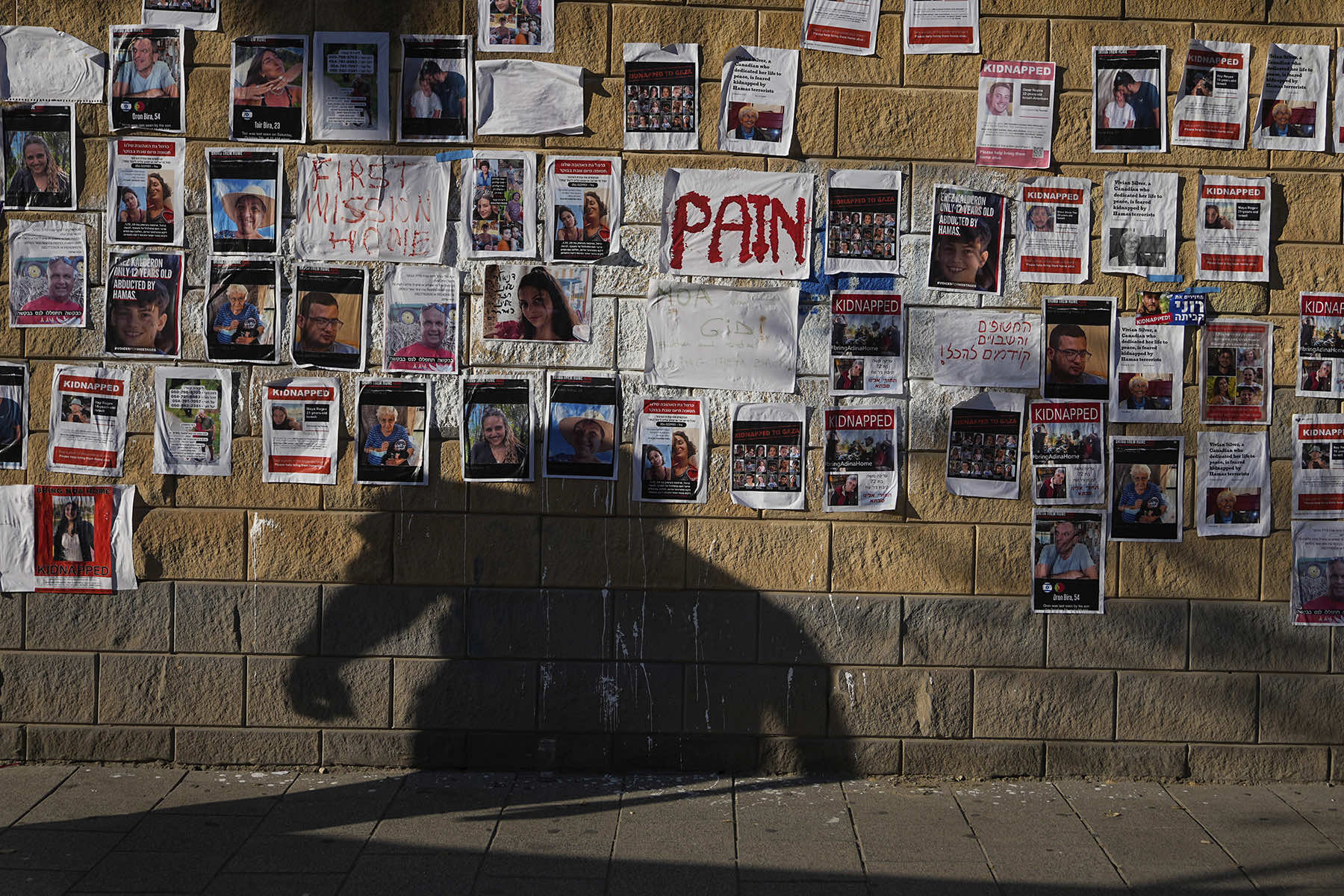
Making the posters, they said, came out of a desire to feel connected, and to do something to help.
Artists Nitzan Mintz and Dede Bandaid would normally have been at home in Tel Aviv with family and friends, but were instead in New York City to take part in an art program when Hamas fighters massacred more than 1,400 people in Israel on October 7.
They channeled their anguish into creating posters bearing the names and faces of the more than 200 people taken hostage during the attack, each page blaring “KIDNAPPED” across the top. The goal was to invoke public pressure in hopes of bringing the abducted home. Fliers and posters based on their template have since appeared in cities around the world.
While they were intended to inspire outrage at Hamas and sympathy for the abducted, the posters have also become a flashpoint, angering people critical of Israel’s actions in the conflict with Palestinians, who see the posters as propaganda.
Pro-Palestinian activists in many cities have torn them down. Videos and photos of people ripping down the posters have, in turn, been circulated by pro-Israel activists on social media, who say the act is antisemitic.
Arguments over the posters led to the arrest of a woman at Columbia University, who was charged with assaulting another student. Another woman was arrested in Brooklyn recently, accused of pepper spraying a Jewish man after he confronted her about tearing down posters. News stories and social media posts have identified people ripping down posters, with the aim of trying to get people fired or thrown out of their schools.
“When we see the amount of hate that we get,” Bandaid said, the two artists remember that “we put the posters there because we want to do something good.”
They worked with designers Tal Huber and Shira Gershoni in Israel to create the posters. They said that when they initially put the designs online for people to print out themselves, they included a suggestion that anyone putting one up not engage with anyone who opposed the fliers. But the nature of the response from some caught them off guard.
“Our campaign is not to run down Palestinians,” Mintz said. “It is just to take care of one aspect out of this entire mess.”
Rafael Shimunov, a Jewish activist who has spoken out for Palestinians, said he thought the posters were mostly being torn down to oppose a long history of violence against Palestinians.
“Like everything in this world, there’s always portions of people who are motivated by antisemitism. But from what I’ve seen, overwhelmingly it’s people who just don’t want more war and more excuses for bombing civilians,” he said.
He said he wished the posters did not just focus on the Israelis “who were horribly, horribly brutalized and victimized.”
Since the hostages were taken, Israel’s retaliatory military strikes on the Gaza Strip have killed more than 10,000 Palestinians, according to the Hamas-run Health Ministry.
A lack of water, electricity, food, and medical supplies have created dire conditions throughout the besieged enclave.
Of the more than 200 hostages taken by Hamas, five have been freed. The fate of most of the others is unknown.
Mintz is determined to hold onto the idea that they can all come back to their families.
“With the hostages, there is hope,” Mintz said. “We hope that all of them are alive. We are sure that some of them are alive. It has to be that.”
The artists put up many of their posters in New York City themselves. In some ways, the posters are an echo of the fliers put up in the city by desperate family members after the terrorist attack on the World Trade Center on September 11, 2001.
“All the families that we’re talking to, they share this hope until someone will tell them otherwise,” Bandaid said.
Before the death toll of that day became clear, the signs asking for any information about missing loved ones were a way to keep the possibility alive that they could still come home, said Kevin Jones, communications professor at George Fox University in Newberg, Oregon, who has written about them.
He said the posters describing people as kidnapped covers similar ground, implying the possibility for a safe return. “It creates hope,” Jones said.
Holocaust survivors are some of those who have connected with the images. They were brought together on November 8 at the Museum of Jewish Heritage in an effort spearheaded by the Auschwitz Jewish Center Foundation. They each were photographed holding one of the posters, to be used in a larger composite group photo.
Jack Simony, director general of the foundation who came up with the idea for the photo, called them the “living embodiment of strength and resilience.”
“I felt that they would make exactly the right people to hold the pictures of the hostages,” he said, “to give a message to the hostages of courage, to give a message to the families of the hostages of hope.”

